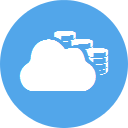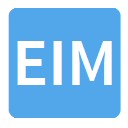Locus announces exciting new SVG functionality for geological data
SAN FRANCISCO, Calif., 6 October 2004 — Locus Technologies (Locus), the leader in environmental information management, today announced that it has expanded its award winning, web-based Environmental Information Management™ (EIM™) system to include the ability to generate on-the-fly boring logs and soil profiles using the Scaleable Vector Graphics (SVG) format. SVG supports dynamic, high-quality graphics that can be generated from real-time data and displayed in a web browser.
Previously, geological data needed to be entered into various expensive software applications to display the information, but did not have the ability to correlate geological and analytical information. These data types had to be downloaded, merged, and analyzed as precious time was lost and consulting hours piled up. The new SVG application, an integrated module in Locus’s EIM, is completely web-based to instantly deliver, sort, and assemble information into highly nuanced reports, boring logs, cross sections, charts, and maps, including raster image overlays, and pictures. Beyond the usual display of boring log data, the log can also display soil and groundwater analytical data and provides interactive drill-down capability for in-depth analysis. Best of all, report-quality geotechnical logs can be printed out with the click of a mouse, further streamlining a previously inefficient process. Much of the system’s power and ease of use is in the speed and flexibility with which it delivers information. Unlike other image formats, SVG image resolution is scalable and does not degrade with enlargement.
“SVG provides a highly suitable tool for real-time display of subsurface data with incredible speed,” says Dr. Neno Duplancic, President and CEO of Locus. “Locus has successfully used SVG for the basis of EIM’s mapping module, and we are excited to bring SVG to the display of complex geotechnical data through boring logs and soil profiles. Furthermore, all of this exciting functionality comes without the need to store large image files on the server end,thus minimizing storage and Internet traffic requirements. By exploiting this exciting new web-based technology, Locus intends to stay at the forefront of web-based display of environmental information by putting inexpensive GIS capabilities on every desktop,” adds Dr. Duplancic.



